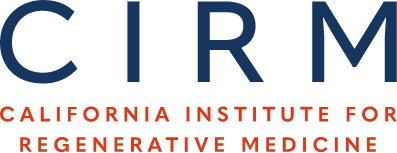Our Strategic Goals
Maximizing CIRM's Impact
The Strategic Allocation Framework (SAF) reflects a refined vision to ensure that CIRM’s investments are aligned with its mission.
In 2024, CIRM adopted a set of key recommendations from its Strategic Allocation Framework (SAF), a structured and data-driven process guiding how the Agency prioritizes its funding and programs. The SAF reflects a refined vision to ensure that CIRM’s investments are aligned with its mission to accelerate the development and delivery of innovative regenerative medicine treatments.
Impact Goals
The SAF was designed to focus CIRM’s resources on measurable impact goals within four key categories. This led to six overarching goals and a broader set of recommendations aimed at accelerating the discovery and translation of therapies, advancing critical approvals for cell and gene therapies, improving accessibility and affordability, and ensuring a diverse, skilled workforce to sustain progress in regenerative medicine.
Accelerating Discovery & Translation
Cell & Gene Therapy Approvals
Accessibility & Affordability of CIRM-Funded Cell & Gene Therapies
Diverse Workforce Development
The following are goals and recommendations (within each key category) from the SAF process:
Accelerating Discovery & Translation
Goal 1: Catalyze the identification and validation of at least 4 novel targets and biomarkers, ensuring integration into preclinical or clinical research for diseases in California.
Recommendations
- Support comprehensive discovery research through DISC4 & DISC5 funding structures
- Encourage collaborative, multidisciplinary innovation in stem cell and genetic research across diverse disciplines & disease indications with early engagement of industry to address reproducibility & scalability issues
- Establish a Data Coordinating and Management Center (DCMC) to streamline data management and enhance the utility of cross-disease data
- Fund and develop a central hub for data coordination, facilitating better integration with consortia & research initiatives and enabling data science collaborative efforts via dedicated grant
Goal 2: Accelerate development and utilization of 5-8 technologies that have the potential to improve safety, efficacy, and/or quality of cell and gene therapies.
Recommendations
- Pilot INFR Technology Platform Program to bridge the gap between research and commercialization
- Foster partnerships between academic researchers & industry professionals to support multistakeholder technology incubation programs that achieve defined technology readiness levels thereby facilitating rapid application in cell & gene therapy development
Cell & Gene Therapy Approvals
Goal 3: Advance 4-7 rare disease projects to Biologics License Application (BLA).
Recommendations
- Accelerate Current rare disease therapy pipeline
- Increase and scale CLIN4 funding to comprehensively address BLA readiness gaps in manufacturing clinical/non-clinical research and pre-commercialization
- Pilot Platform-Based Therapy Development
- Implement pilot platform-based approach for gene therapy development using life-threatening monogenic neurological disorders as a test case
Goal 4: Propel 15-20 therapies targeting diseases affecting Californians to late-stage trials.
Recommendations
- Streamline Preclinical Development Programs
- Consolidate DISC2, TRAN 1-4, and CLIN1 to accelerate the preclinical development incentivizing multidisciplinary collaborations and rapid progression to IND. Incorporate prioritization of innovative therapies for diseases that affect Californians
- Update CLIN2
- Allow for support of emerging novel clinical trial designs in CLIN2 program
- Incentivize stage-appropriate market access strategy development and pre-commercialization activities in the CLIN2 program
- Incorporate prioritization of innovative therapies for diseases that affect Californians
Accessibility & Affordability of CIRM-Funded Cell & Gene Therapies
Goal 5: Ensure that every BLA-ready program has a strategy for access and affordability.
Recommendations
- Strengthen Clinical Infrastructure Connectivity
- Build interconnectivity & performance metrics between CIRM Clinical Infrastructure (Alpha Clinics, CCCEs, PSP) to ensure enhanced referral enrollment & retention of California patients in clinical trials
- Support Development of Market Access and Reimbursement Strategies
- Resource clinical programs to support stage appropriate planning & evidence generation to inform robust market access & reimbursement strategies
- Influence Policy
- Deploy AAWG resources to advocate for policies that advance access & reimbursement for regenerative medicines
- Enhance Partnerships
- Engage state & national partners to align initiatives that expand sustainable access to regenerative medicines
Diverse Workforce Development
Goal 6: Bolster CIRM’s workforce development programs to address gaps and meet evolving demands in regenerative medicine.
Recommendations
- Provide high-demand technical training via Bridges & COMPASS program updates
- Increase training offerings diversify internship types & increase integration with CIRM R&D grants
- Create new EDUC program to develop hybrid skillsets
- Implement new program structure to focus on cross-disciplinary internships
- Launch outreach campaigns to educate the public & increase diversity of California’s regenerative medicine workforce
- Develop programming to support outreach education efforts for K-12, teachers, & community members via collaboration with key stakeholders
Additional Recommendations
- Restart Grantee Conference to Report SAF Goal Progress
- Restart recurring grantee conference (timing TBD) with main objective of reporting progress on SAF goals
- Keep Conference Grants for Specific CIRM Needs (EDUC1 Mechanism 2)
- Grantee retains the primary responsibility for planning directing and executing the proposed event. CIRM team will work closely with the grantee to design and implement an event responsive to a specific CIRM needs
“CIRM has made a significant impact on the research ecosystem in California. Our new priorities will refine that process, making sure that every dollar is strategically allocated through impact goals and data-driven analysis. This ensures resources are spent on projects that have the highest potential to make a significant difference,” said Rosa Canet-Avilés, PhD, CIRM Chief Science Officer (CSO) who spearheaded the SAF effort.
How the SAF Started
The SAF effort kicked off during the September 2023 Science Subcommittee Meeting, following a prioritization discussion that highlighted the need for a more deliberate and strategic approach to resource allocation. In response, the Board directed CIRM staff to develop a structured, data-driven framework to guide funding priorities. Since early 2024, CIRM worked closely with the Science Subcommittee, the Neuro Task Force, and other advisory groups to define and evaluate how CIRM can make the greatest impact with its remaining $3.86 billion budget, including $1.14 billion dedicated to neuroscience.
About the SAF Process
The SAF outlines clear impact goals and measurable success metrics. Initiated by a staff-led analysis group and introduced to the ICOC in March 2024, the process leveraged internal data, external research, and stakeholder input to identify funding areas with the greatest potential for impact. This effort builds on CIRM’s collaborative tradition, with further input from key committees leading to formal recommendations to the Board in September 2024. It reflects CIRM’s ongoing commitment to shaping strategic directions in close partnership with the Board.
SAF Resources
Download materials for overviews and FAQs on CIRM’s new SAF impact goals.



